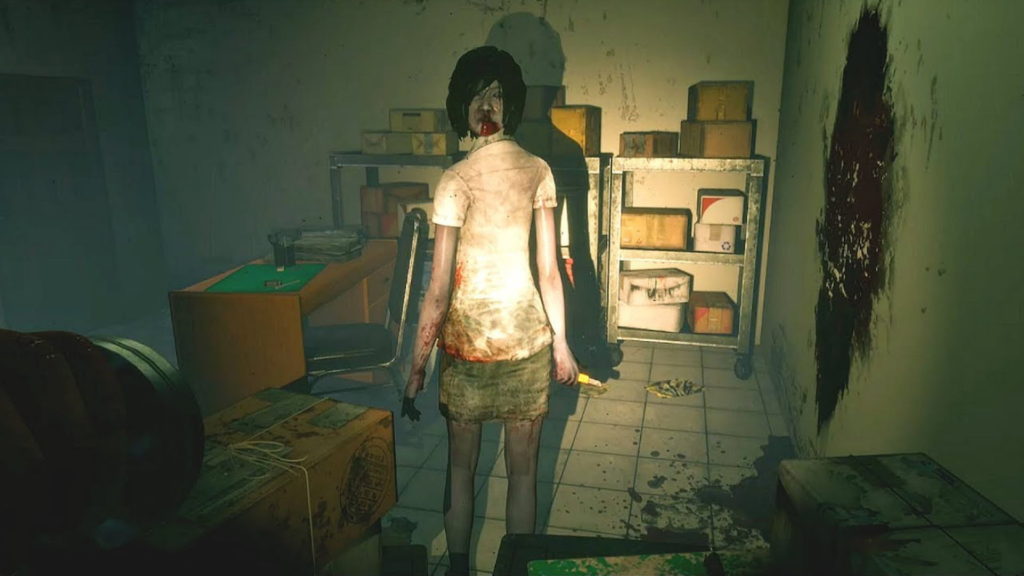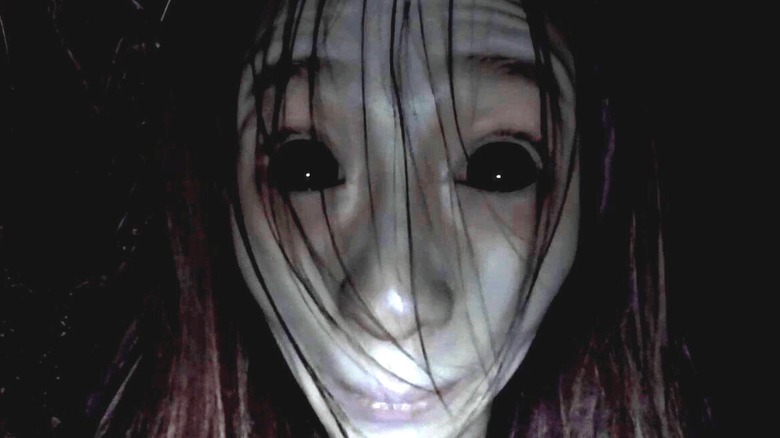Continuing the Discorse

Though I am not a big fan of horror games, I had many experiences with horror books back in high school. In this short blog, I want to analyze some common features between horror games and horror literature, and also show some differences underlying these common features.
Since they both fall into the category of horror genre, there are definitely many common features between them:
First, they both try to create a sense of engagement with their own unique medium. While horror literature utilizes descriptive language to draw you into the story line, horror games could easily use horrible sound, terrifying level rendering to do the job.

Second, the things human fear have a certain type. For example, most of us fear monsters, a woman ghost in white with long hairs covering the face, and , according to the Uncanny Valley Effect, a doll with humanoid faces. Besides, most of us feel unsafe under certain environments like alone in the dark, and in certain places like an ancient tomb or a haunted house. Therefore, both horror games and horror literature utilizes this common attribute to build scary enemies and make us feel unsafe and unprotected.

However, there are many differences underlying the common features specified above. I will only elaborate on one of them due to the short length of this blog.
Compared to horror literature, horror video games can draw people into fear much quicker. For horror literature, readers have to read through the descriptive language and then gradually build a scene inside their head with imagination. In other words, people don’t get consumed by the plot after reading the first page of the book. They have to build fear gradually. Horror games, however, have many tools inside their toolbox including sound, light, and image to create fear. At least for me, every time I play horror games, the moment when I put my headphones on and hear the scary sound, I begin to fear already. Most importantly, horror games have interactions and game mechanics that could immediately pull you into the context.
Yet according to my own experience and observations, while horror video games are much better at drawing people into the world of terror, the terror they created is usually not long-lasting. After a few hours people have stopped playing and pulled themselves out of the 4D (with sound) horror environment, they will no longer fear. However, the impression horror books leave could be long-lasting, some even lingering for a few years.

How to account for this difference?
My answer is that while horror games concretize the horror symbols with images, horror literature mostly rely on people’s own imagination to do the job. For the same description, different people could form different imaginations. In other words, horror literature digs deeper into the fear of readers and elicits the deepest fear inside them with words.
There are still many differences and similarities between horror games and horror literature, and I am very welcome to discussions.


Just here to say that I got semi-jump-scared by your cover image)
(The real horror was your cover image). I also have often come to that same conclusion with horror books – they grasp me in a way that movies and horror games simply do not, leaving me looking over my shoulder and letting my imagination run wild. I would also argue against, or at least push back, against your idea that horror games do not leave their impressions upon a person. Rather, I would consider how exactly a horror game tries to scare its audience, and get the point across. Its the difference between jump scares and a lingering horror. Jump scares tend to be fleeting, while creating an atmosphere of horror, of belief, has a much longer lasting impact on its audience.
I really liked your points about how horror writing “sticks” much longer than video games typically do. Imagination plays a huge part in the sense of fear people get from horror media, and books are definitely able to pull on imagination to succeed in scaring the player. I think it’s important to acknowledge that video games can definitely pull from the players imagination just as much as books can. For example, once the player is transported to the future in SOMA, they do not see an actual monster for a while. The feeling of what could be lurking in the dark its often more terrifying than what actually ends up being there. The entirety of Anatomy is built on this principle, with the draw distance (distance at which things are rendered in game) is absolutely abysmal. You can barely see 2 feet in front of you, which makes the game incredibly scary. Imagination is an extremely powerful tool that both writers and video game designers can use.
Hi, really loved this article as it was a great comparison between horror games and horror literature! While I do understand where you’re coming from when you argue that horror literature makes a much more lasting impression than horror games or movies, I ultimately have to disagree, or at the very least pushback, against this idea that the terror presented in horror games is not long-lasting. While I can’t speak on the horror literature part as I have admittedly not read a lot of horror books, I can at least speak on the horror game aspect, and I think depending on the right game, a horror game can be so incredibly frightening and leave such a huge impression on your psyche that you won’t be able to close your eyes when going to bed. For example, I think the first Outlast game is an incredibly frightening experience that leaves a long-lasting impression because not only are you forced to deal with a bunch of crazy psychos in an insane asylum, but because you can’t do anything to fight back, running and hiding from them leaves a sense of dread every time you hear one of them coming toward you or chasing after you. Sure, something like that could be equally scary if you read about something like that from a book and left it up to your imagination, but I think the fact that you are forced to interact with a horror encounter like in Outlast leaves a lasting impression that a book can only dream of leaving.